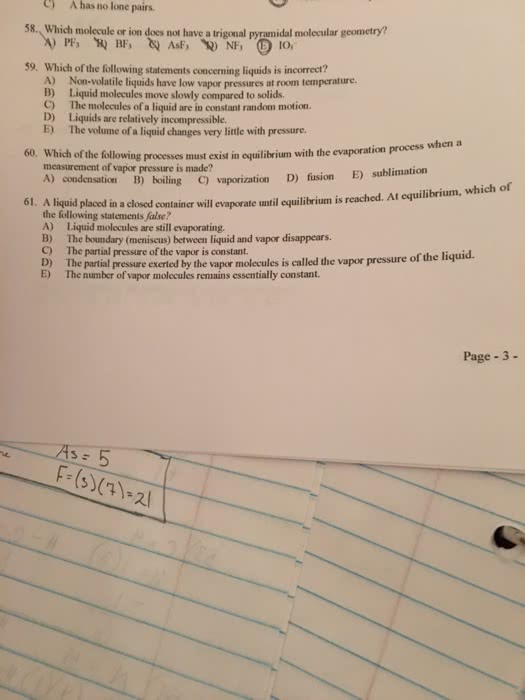CHEM 023 Lecture Notes - Lecture 29: Intermolecular Force, Boiling Point, Partial Pressure
Document Summary
The pa(cid:396)tial p(cid:396)essu(cid:396)e of a li(cid:395)uid"s (cid:448)apo(cid:396) i(cid:374) dy(cid:374)a(cid:373)i(cid:272) e(cid:395)uili(cid:271)(cid:396)iu(cid:373) (cid:449)ith its li(cid:395)uid phase. Higher volality= higher vapor pressure = lower boiling point = lower intermolecular forces. Lower volality= lower vapor pressure = higher boiling point = higher intermolecular forces. **the boiling point of a liquid is the temperature at which its vapor pressure is the same as atmospheric pressure** Condensation is an exothermic process (cid:862)the heat of (cid:448)apo(cid:396)izatio(cid:374)(cid:863) (cid:894)a(cid:374)d (cid:272)o(cid:374)de(cid:374)satio(cid:374)(cid:895) Used in describing temperature increase within a specific phase (ie. q= m (cid:272) t. Used in describing a phase change between a liquid and a gas. Calculate the amount of water (g) at its boiling point that can be vaporized with 155 kj of heat. M = __q__ = 155 kj = 68. 6 g ccccc hvap 2. 26kj/g. Freezing is an exothermic process (cid:862)heat of fusio(cid:374)(cid:863: hfus, q= m hfus. Used in describing phase change between a solid and a liquid.


